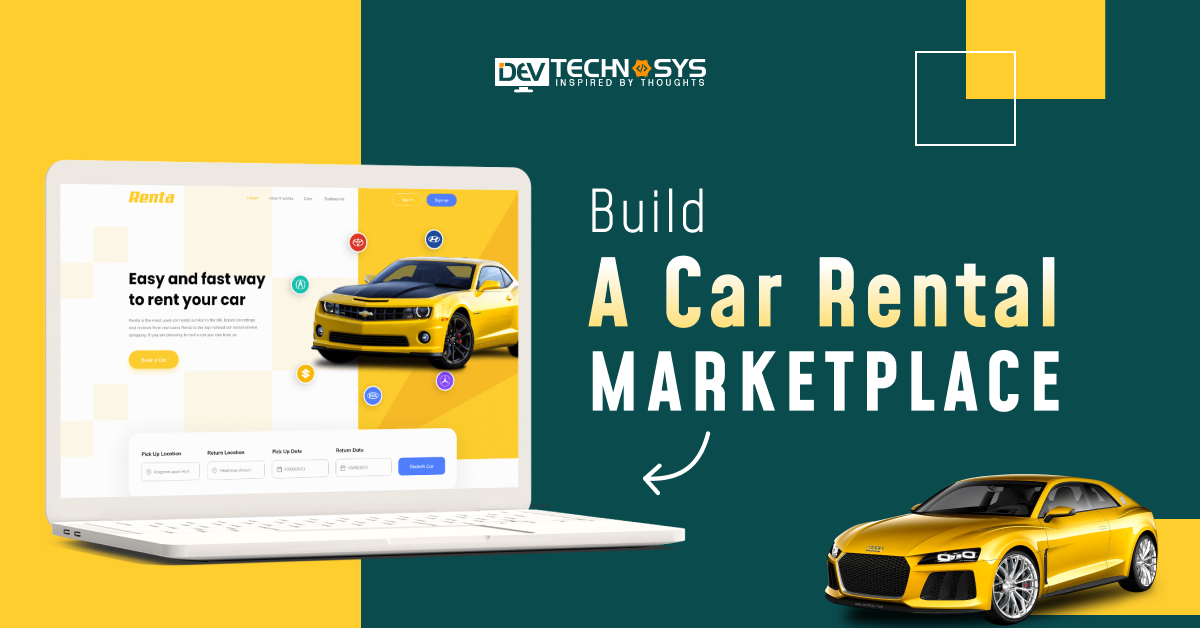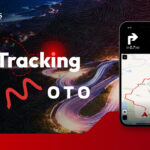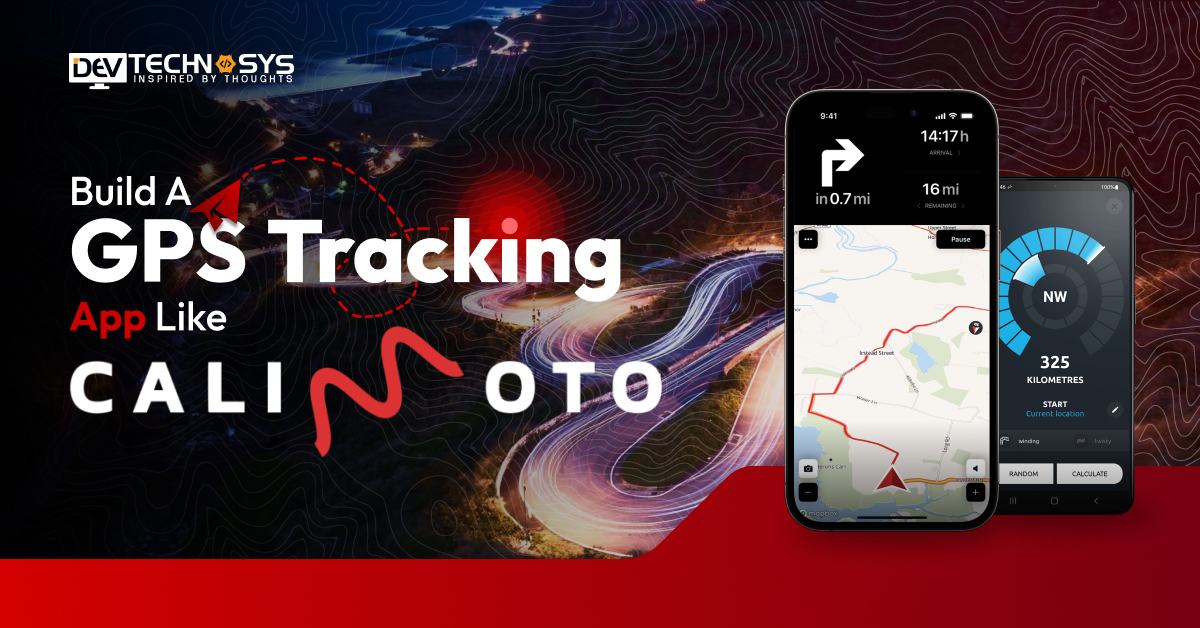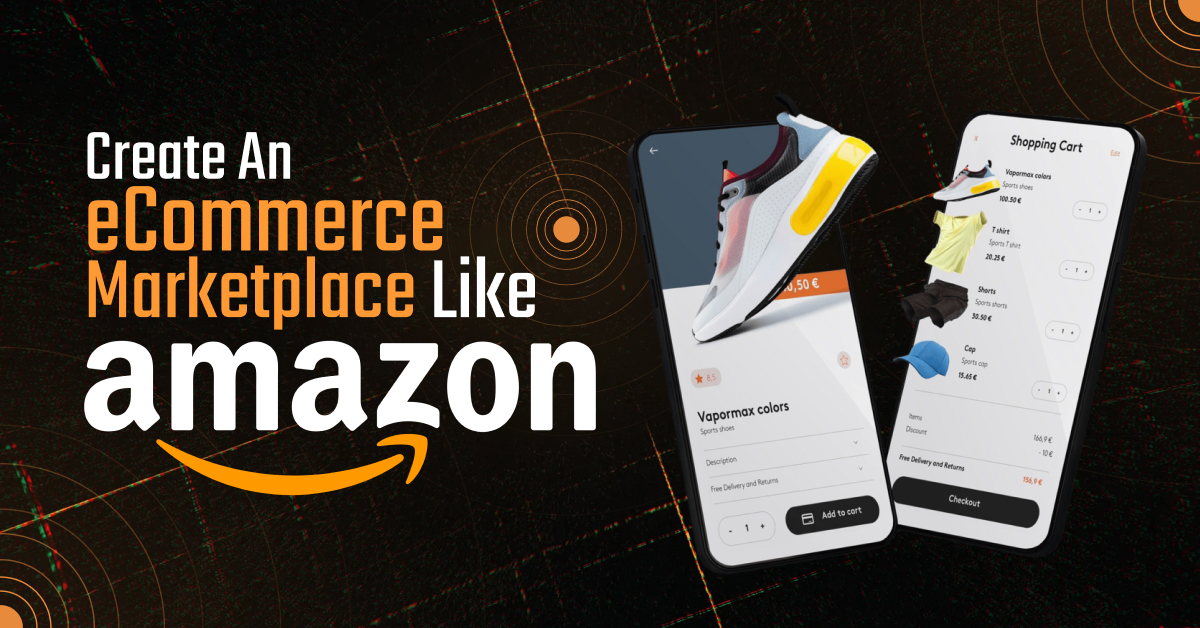In this new generation, people take great care of their cars, and it is a pleasure to drive a new car. In earlier times, people used to book a taxi to go anywhere, but their driver used to come with them, so people hesitated a bit when discussing their personal matters. But now it’s not.
A car rental marketplace boom in today’s market enables people to take cars for rent at reasonable prices. There are a lot of users who take cars on rent for their vacations, short trips, long trips, and other traveling. Because of this, the demand for car rental marketplace has increased.
According to a recent survey, the car rental marketplace will be valued at around $108.20 billion in 2025; it is expected to grow to $124.10 billion by the end of 2029.
In this blog, we will explore how to build a car rental marketplace and why today’s offline car rental businesses want to convert their businesses into an online platform.
What Is Car Rental Marketplace?
A car rental marketplace is an online platform that allows consumers and businesses to rent vehicles from a range of owners and rental firms. It connects automobile owners with clients wishing to hire, providing a diverse selection of vehicles.
These platforms often offer easy booking, payment choices, and reviews. Examples include car rental app like Turo and traditional rental corporations like Enterprise that provide online reservation systems.
- Wide selection of vehicles from various owners and agencies.
- Easy booking and seamless online reservation process.
- Transparent pricing with clear rental terms and conditions.
- User reviews and ratings to ensure quality and reliability.
Market Analysis of Car Rental Marketplace
- According to a study, the global revenue from car rentals is expected to reach US$108.20 billion by 2025.
- As the the recent reports, the average revenue per user (ARPU) is estimated to be US$167.40.
- Furthermore, it is estimated that by 2029, internet sales will account for 75% of total income in the Car Rental business.
- The United States is likely to earn the largest revenue in this industry, with a projected revenue of $32,690 million by 2025.
- The user penetration rate is estimated to be3% in 2025, increasing to 10.1% by 2029.
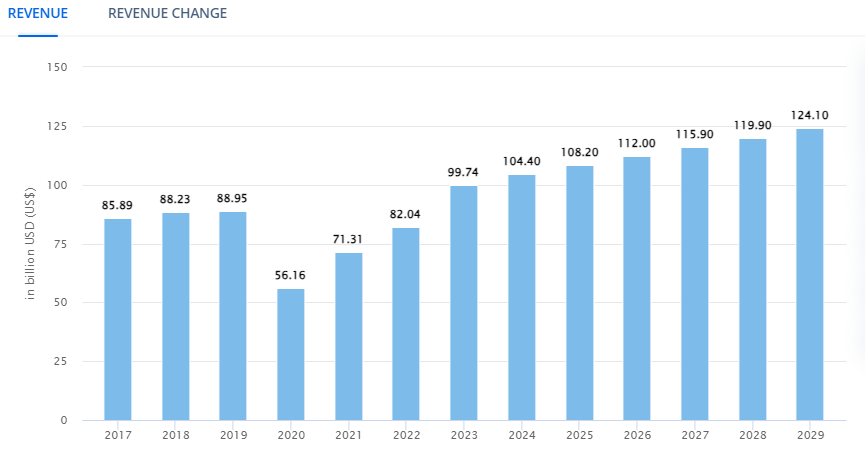
10 Best Car Rental Marketplace
This list includes notable car rental marketplaces that provide a diverse selection of vehicles, ratings, and platforms for users to pick from. Here, we provide the best car rental apps:
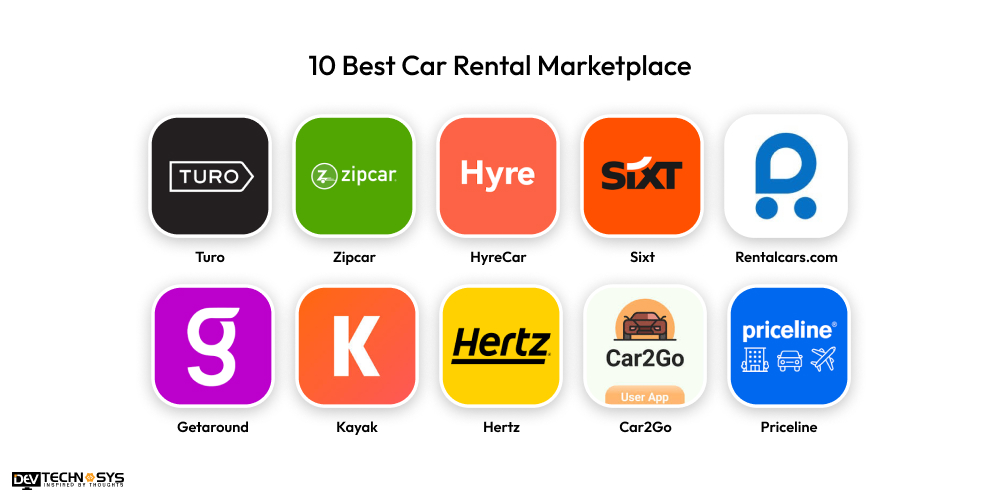
| Apps | Downloads | Ratings | Launched Year | Platform Compatibility |
| Turo | 10M+ | 4.8 | 2010 | Android, iOS, Web |
| Zipcar | 5M+ | 4.7 | 2000 | Android, iOS, Web |
| HyreCar | 500K+ | 4.5 | 2014 | Android, iOS, Web |
| Sixt | 10M+ | 4.6 | 2009 | Android, iOS, Web |
| Rentalcars.com | 1M+ | 4.5 | 2004 | Android, iOS, Web |
| Getaround | 1M+ | 4.7 | 2009 | Android, iOS, Web |
| Kayak | 10M+ | 4.6 | 2004 | Android, iOS, Web |
| Hertz | 10M+ | 4.6 | 2012 | Android, iOS, Web |
| Car2Go | 1M+ | 4.7 | 2008 | Android, iOS, Web |
| Priceline | 10M+ | 4.5 | 2010 | Android, iOS, Web |
Why Entrepreneurs Invest In The Car Rental Marketplace Development?
Entrepreneurs invest in car rental mobile app development for a variety of compelling reasons, including business potential and technical developments. Here are five important reasons why this sector draws investment:
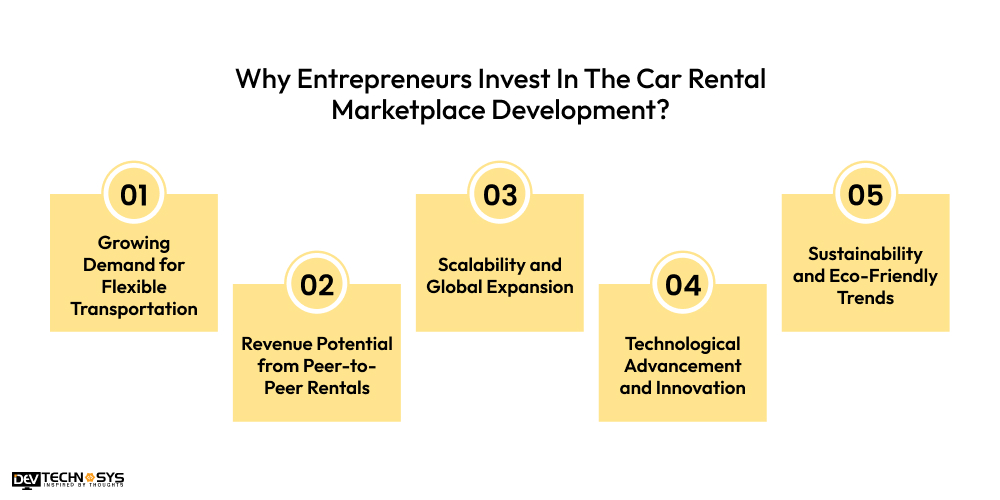
1. Growing Demand for Flexible Transportation
As urbanization rises and individuals adopt more flexible lives, the demand for alternate transportation solutions grows. Traditional car ownership is becoming less appealing, particularly in urban areas where public transportation or ridesharing choices abound.
Car rental marketplaces cater to the expanding trend of shared economy models, providing users with short-term access to vehicles without the long-term commitment of ownership.
2. Revenue Potential from Peer-to-Peer Rentals
The car rental marketplace model, particularly peer-to-peer (P2P) platforms such as Turo and Getaround, has high revenue potential. Entrepreneurs can create platforms that allow automobile owners to rent out their vehicles while they are not in use, producing passive revenue for the owners while also earning fees for the platform.
This not only capitalizes on underutilized assets (idle cars) but also provides an income-generating opportunity for regular people, attracting both vehicle owners and renters to the marketplace.
3. Scalability and Global Expansion
The top car rental apps follow a scalable business model. Once a successful platform has been established in one region, it can be readily expanded to other locations, both domestically and worldwide. The capacity to expand swiftly enables businesses to enter new markets and serve a diverse consumer base.
By investing in the necessary technology and infrastructure, these platforms can quickly respond to the expanding global demand for flexible automobile rentals, establishing themselves as industry leaders.
4. Technological Advancement and Innovation
Advancements in smartphone apps, GPS monitoring, and payment systems have improved the usability and efficiency of automobile rental platforms. Entrepreneurs are thrilled about the prospects to go even further, incorporating technology such as artificial intelligence for dynamic pricing and blockchain for secure transactions.
These innovations can set a platform apart from competitors, boost customer satisfaction, and improve operations, making it a worthwhile investment for forward-thinking enterprises.
5. Sustainability and Eco-Friendly Trends
With rising environmental awareness, car ride sharing app development focus on eco-friendly vehicles, such as electric or hybrid cars, are gaining appeal. Entrepreneurs may capitalize on the growing customer demand for sustainable transportation options.
Offering green options not only aligns with global sustainability trends, but also appeals to environmentally concerned consumers, making the platform appealing to both users and investors.
7 Robust Steps To Build a Car Rental Marketplace
Building a successful car rental marketplace involves strategic planning and effective execution. It allows businesses to easily understand all the steps and need to observe the basic features that must be integrated. Here are various robust steps to guide the car rental mobile app development process:
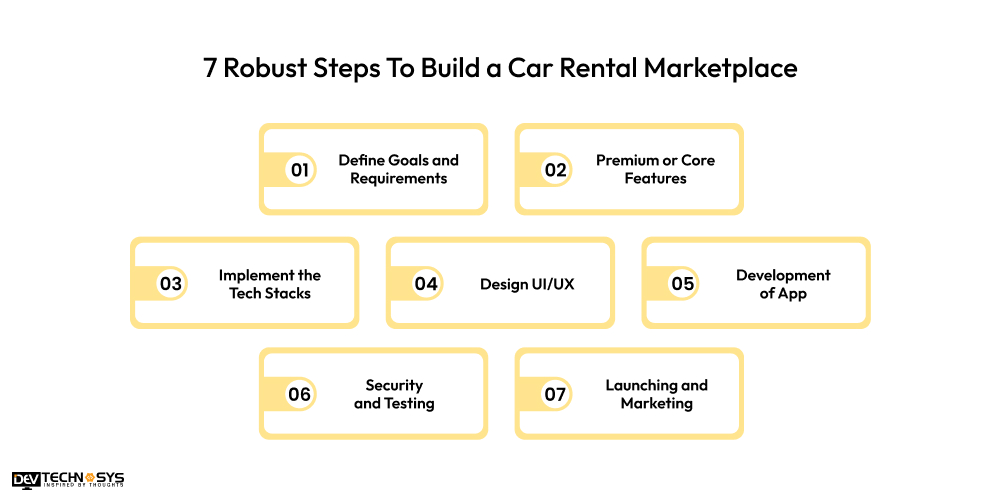
1. Define Goals and Requirements
Before development begins, clearly define the goals of your car rental marketplace. What specific problems are you solving for car owners and renters? Are you focusing on peer-to-peer rentals, luxury cars, or specific geographic areas?
Understand your target audience and observe their needs to prioritize features and ensure your platform meets market demands.
| What are your project’s basic or core requirements? |
| Define your future goals. |
| Which car rental marketplaces are more trending in this competitive market? |
2. Premium or Core Features
Identify the essential features of your car rental marketplace. Core features include user registration, vehicle listings, real-time availability, a booking system, a payment gateway, and reviews.
Hire dedicated developers to integrate the premium features; it include dynamic pricing, GPS tracking, insurance integration, and advanced search filters.
| What are your project’s basic features and functions? |
| Observe the existing marketplace for car rentals. |
| Make a clear sheet of features and functions. |
3. Implement the Tech Stacks
In the third phase of development, choose the right technology stack based on your platform’s requirements. For mobile app development, opt for native or cross-platform frameworks like Swift, Kotlin, or Flutter.
Choose scalable cloud infrastructure like AWS or Google Cloud for hosting and integrate third-party APIs for payment processing, mapping, and vehicle tracking.
| What are the key components of a full-stack development tech stack? |
| How do you evaluate the scalability of a tech stack? |
| How can security be integrated into a tech stack? |
4. Design UI/UX
A user-friendly interface and seamless experience are crucial for customer retention. The UI/UX design should be intuitive, responsive, and visually appealing. Focus on easy navigation, fast booking processes, and clear calls to action.
Hire mobile app developers to ensure the design is mobile-friendly, as many users will access the platform through their smartphones. Keep it simple, ensuring users can book a car within a few clicks.
| What are wireframes in UX design? |
| What tools do you use for prototyping? |
| How do you ensure a responsive design? |
5. Development of App
Begin the development phase by translating your defined features into functional code. Break the project into phases, such as frontend and backend development, followed by integration with third-party services. Keep the platform modular to allow for future updates and scalability.
Ensure the app and website are fully responsive and have optimized performance to handle high traffic.
| Do you want to create hybrid or native apps? |
| Choose the dedicated developers. |
| What role does API integration play in app development? |
6. Security and Testing
Security is crucial in any marketplace, especially when handling sensitive information like payment details and personal data. Assemble experience developers from an mobile app development company to implement strong encryption, multi-factor authentication, and secure payment gateways.
Thoroughly test the platform for bugs, performance issues, and user experience flaws through beta testing and user feedback.
| Make sure that all features and functions are working properly |
| Use various testing methods such as unit and integration testing. |
| Check the app’s security measurements. |
7. Launching and Marketing
Once the platform is ready, prepare for a successful launch. Take advice from an Android app development company to publish the app on the selected platforms such as Android and iOS.
After that, create a marketing strategy to attract car owners and renters, using SEO, social media, influencer collaborations, and paid ads. Monitor the platform post-launch for any bugs or issues and respond quickly to user feedback.
| Publish your app on selected platforms like Android and iOS. |
| Use the best marketing techniques. |
| Assign the post-maintenance phases to maintain the app’s performance. |
10 Must-Have Advanced Features of Car Rental Marketplace
These innovative features contribute to a seamless and trustworthy automobile rental experience, increasing user satisfaction and platform efficiency. Here are 10 must-have advanced features for a peer-to-peer car rental marketplace:
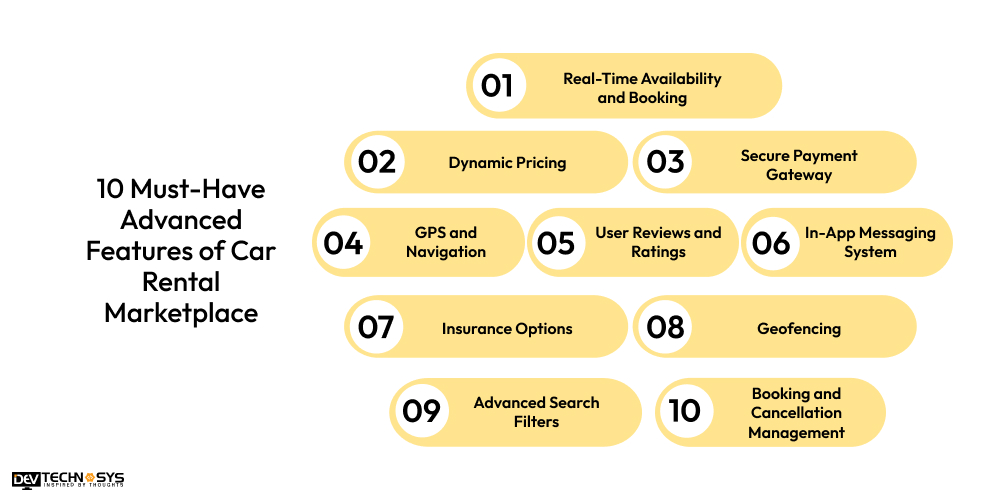
1. Real-Time Availability and Booking
An app like zipcar offer availability of vehicles in real-time based on location and rental length, ensuring users have a seamless booking experience.
2. Dynamic Pricing
A pricing methodology that adjusts based on parameters such as demand, vehicle type, rental duration, and location, resulting in competitive rates.
3. Secure Payment Gateway
Peer to peer carsharing integrates many payment mechanisms, including credit/debit cards, mobile wallets, and cryptocurrencies, to ensure secure transactions.
4. GPS and Navigation
Turo-like car rental marketplace includes built-in GPS tracking for both users and vehicle owners, which aids navigation and provides security by tracking the car’s whereabouts.
5. User Reviews and Ratings
A car rental app like Hertz provides a transparent user feedback system for both vehicles and owners, helps to create confidence, and maintains quality standards.
6. In-App Messaging System
A direct communication option that enables renters and owners to negotiate terms, explain problems, and resolve difficulties before and throughout the rental time.
7. Insurance Options
Insurance packages are integrated into the platform, allowing renters to purchase coverage directly providing peace of mind to both parties.
8. Geofencing
Geofencing technology that warns the platform when a vehicle leaves a designated area, assuring safety and reducing risk.
9. Advanced Search Filters
An app like Getaround allows users to filter automobiles based on specific parameters like model, price, fuel type, or amenities, making it simple to discover the right vehicle.
10. Booking and Cancellation Management
The car rental apps alternatives allows you to book, alter, or cancel reservations, making the renting process more convenient and flexible.
The Cost To Build a Car Rental Marketplace
The cost of creating a car rental marketplace varies according to features, complexity, and location. The typical car rental mobile app development cost ranges from $8,000 to $25,000 or more. Basic platforms with fundamental functionality may be inexpensive, whereas complex marketplaces with dynamic pricing, GPS integration, and payment systems may be more expensive.
Additional expenses include design, testing, continuing maintenance, and marketing. Outsourcing development to places with cheaper labor costs might have an impact on the ultimate pricing, which varies by country.
| Car Rental App Development | Estimated Cost | Time Frame |
| Basic App Development | $8000 – $13000 | 2 to 5 Months |
| Mid-Premium App Development | $14000 – $20000 | 5 to 9 Months |
| High-Premium App Development | $25000+ | 9+ Months |
Major Factors That Affect Online Car Rental Marketplace Development Costs?
When building an online automobile rental marketplace, a number of factors influence the total development expenses. These include the features needed, the development team, UI/UX design, backend development, and continuous support. Here’s how each of these variables influences the cost:
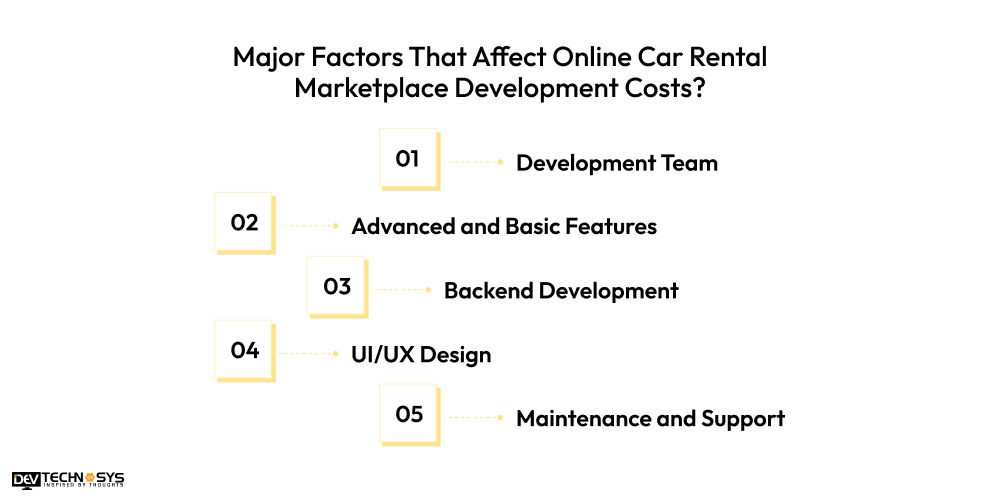
1. Development Team
The composition of the development team influences cost. Hiring skilled developers who specialize in vehicle rental platforms, front-end and back-end programming, and RV rental app development generally results in better prices.
Costs vary depending on the location where the development team is based—developers in North America or Western Europe often charge more than those in Eastern Europe or South Asia.
| Developer’s Location | Cost Estimation |
| Asia Pacific | $8,000 – $15,000 |
| North America | $15,000 – $20,000 |
| Eastern Europe | $13,000 – $18,000 |
| Western Europe | $16,000 – $25,000 |
2. Advanced and Basic Features
The complexity and number of features are important factors in deciding the cost. Rudimentary services such as automobile search, booking, payment gateways, and rudimentary user profiles might help to keep expenses low.
However, premium features such as dynamic pricing algorithms, real-time vehicle tracking, integrated insurance options, advanced search filters, and GPS navigation necessitate additional development time and expertise, raising the cost.
| Features | Cost Estimation |
| Core Features(Real-time tracking and order history) | $8,000 – $12,000 |
| Advanced Features(Secure payment methods and higher security protocols) | $15,000 – $20,000 |
3. Backend Development
Database administration and API connectivity are supported via the backend infrastructure. A strong backend ensures efficient operations and data security, particularly for payment processing and user data.
Complex backend systems with real-time booking, automated pricing, and data storage raise car rental software development costs since they demand competent backend developers and scalable architecture.
| Backend Development | Cost Estimation |
| Basic Backend Process | $10,000 – $18,000 |
| Premium Backend Process | $20,000 – $28,000 |
4. UI/UX Design
A smooth and intuitive user interface (UI) and user experience (UX) are essential for the success of any online marketplace. A minimalist design can save money, but a more sophisticated, responsive, and visually appealing design takes more investment.
Custom animations, branding, and user-centric flows increase design expenses while improving user pleasure and engagement.
| Design Quality | Cost Estimation |
| Basic Design | $8,000 – $12,000 |
| Complex Design | $15,000 – $22,000 |
5. Maintenance and Support
Maintenance and support costs continue to be incurred after launch. Regular updates, bug repairs, server maintenance, and growing the platform as it expands necessitate ongoing effort. This can range from 15% to 20% of the initial on-demand app development cost per year, depending on the platform’s complexity.
| Maintenance Phase | Cost Estimation |
| Simple Maintenance Phase | $2,000 – $4,000/year |
| Complex Maintenance Phase | $8,000 – $10,000/year |
How To Make Money From Car Rental Marketplace Platforms?
A automobile rental marketplace can make cash via a variety of monetization tactics. Here are five main strategies to make money using these platforms:
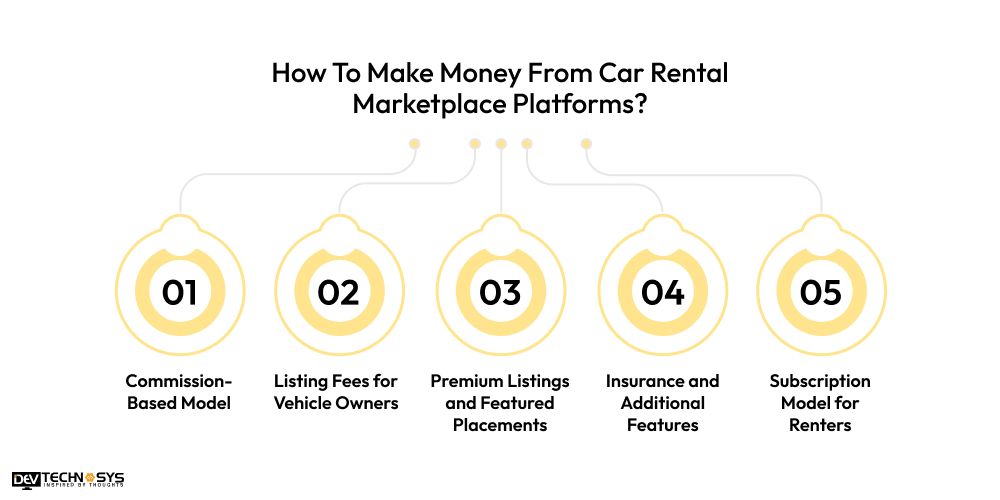
1. Commission-Based Model
One of the most frequent ways door to door car services app make money is by charging a commission on each booking. The platform takes a part of the rental charge paid by the customer, which normally ranges between 10% and 30%. This methodology assures that the platform gets a regular income from each transaction, making it scalable as the marketplace expands.
2. Listing Fees for Vehicle Owners
Car owners who want to rent out their automobiles may be paid a fee to list them on the platform. This could be a one-time fee, a monthly membership, or a set annual amount. By charging listing fees, the marketplace offers a consistent source of money, particularly if it draws a large number of vehicle owners.
3. Insurance and Additional Features
Offering insurance packages as well as extra services like roadside assistance, GPS rentals, and child safety seats adds to the revenue stream. Renters can pay for these add-ons separately or as part of a premium package.
According to the on-demand car sharing app development company, the platform works with insurance carriers; they may receive a commission for each policy sold.
4. Premium Listings and Featured Placements
Car owners can pay extra fees to have their automobiles displayed more prominently on the site, such as at the top of search results or in highlighted parts.
These premium listings enhance visibility and, thereby, rental bookings, which benefits both owners and the marketplace. This business model enables platform owners to upsell services to users.
5. Subscription Model for Renters
To increase client loyalty, car rental app like Enterprise can provide subscription-based models. Users can gain access to exclusive vehicles, priority bookings, and discounted rental rates for a predetermined monthly subscription. This provides regular revenue and increases user retention.
Conclusion
In this blog, we provide the seven robust steps that provide detailed information about each development stage, and businesses easily understand the process. It includes various types of advanced features such as real-time tracking, secure payment options, insurance options, push notifications, advanced searching options, and more. We hope that you cleared all your doubts regarding how to create a car rental marketplace, and we also offer advanced monetization techniques.
To make a car rental marketplace with advanced features, you can connect with our door to door car service app development company to receive cutting-edge development solutions.
Frequently Asked Questions
Q1. How Much Does It Cost To Build a Car Rental Marketplace?
The cost to build a car rental marketplace typically ranges from $8,000 to $25,000, depending on features, platform complexity, and the development team. Additional costs for maintenance, marketing, and support can also apply.
Q2. How Much Time Does It Take To Develop a Car Rental Marketplace?
Developing a B2C car rental marketplace usually takes between 4 to 8 months, depending on the complexity of features, design, and testing requirements. Customizations, integration of advanced functionalities, and platform scalability can also influence the development timeline.
Q3. Which Technologies Are Used To Make a Car Rental Marketplace?
Trending and powerful technologies are used to create a car rental marketplace, here is the list of technologies:
- Java
- Python
- C++
- Flutter
- Kotlin
Q4. Why Businesses Invest In The Car Rental Marketplace Development?
Businesses invest in P2P car rental marketplace development to capitalize on rising demand for flexible transportation, generate consistent revenue through commissions and fees, scale globally, leverage technological innovations, and capitalize on environmentally friendly trends, ensuring long-term profitability and market relevance.
